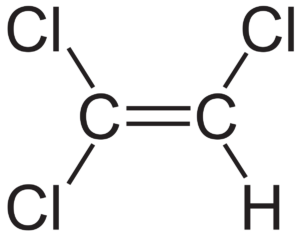 What is Trichloroethylene (TCE)?
What is Trichloroethylene (TCE)?
Trichloroethylene is a halocarbon commonly used as an industrial solvent. It is a clear, non-flammable liquid with a sweet smell. Trichloroethylene is the first daughter product produced when breaking down tetrachloroethylene, also known as perchloroethylene (PCE).
Uses
It is primarily used as a dry-cleaning solvent, as well as to make refrigerants and degreasing solvents for metal equipment. TCE is also used in some household products, such as cleaning wipes, aerosol cleaning products, tool cleaners, paint removers, spray adhesives, and carpet cleaners.
Sources & Potential Exposure
TCE can enter ground and surface water from industrial discharges or from improper disposal of cleaning chemicals. Most TCE in the air comes from metal degreasing activities associated with tool and automobile production. Trichloroethylene is a mild to severe skin, eye, and respiratory-tract irritant. Acute exposure can cause CNS and respiratory depression and cardiac dysrhythmias by inhalation or ingestion.
Federal Regulations
The International Agency for Research on Cancer (IARC) classified trichloroethylene as carcinogenic to humans. The EPA and FDA have set a maximum limit (5 ppb or 5 ug/L) for TCE in drinking water.
REGENESIS Treatment Products – Trichloroethylene
• PlumeStop
• RegenOx
• PersulfOx
• 3DME
• Aquifix
• BDI Plus
• CRS
• S-MicroZVI


 Americas
Americas Europe
Europe Français
Français Deutsch
Deutsch Italiano
Italiano Español
Español


